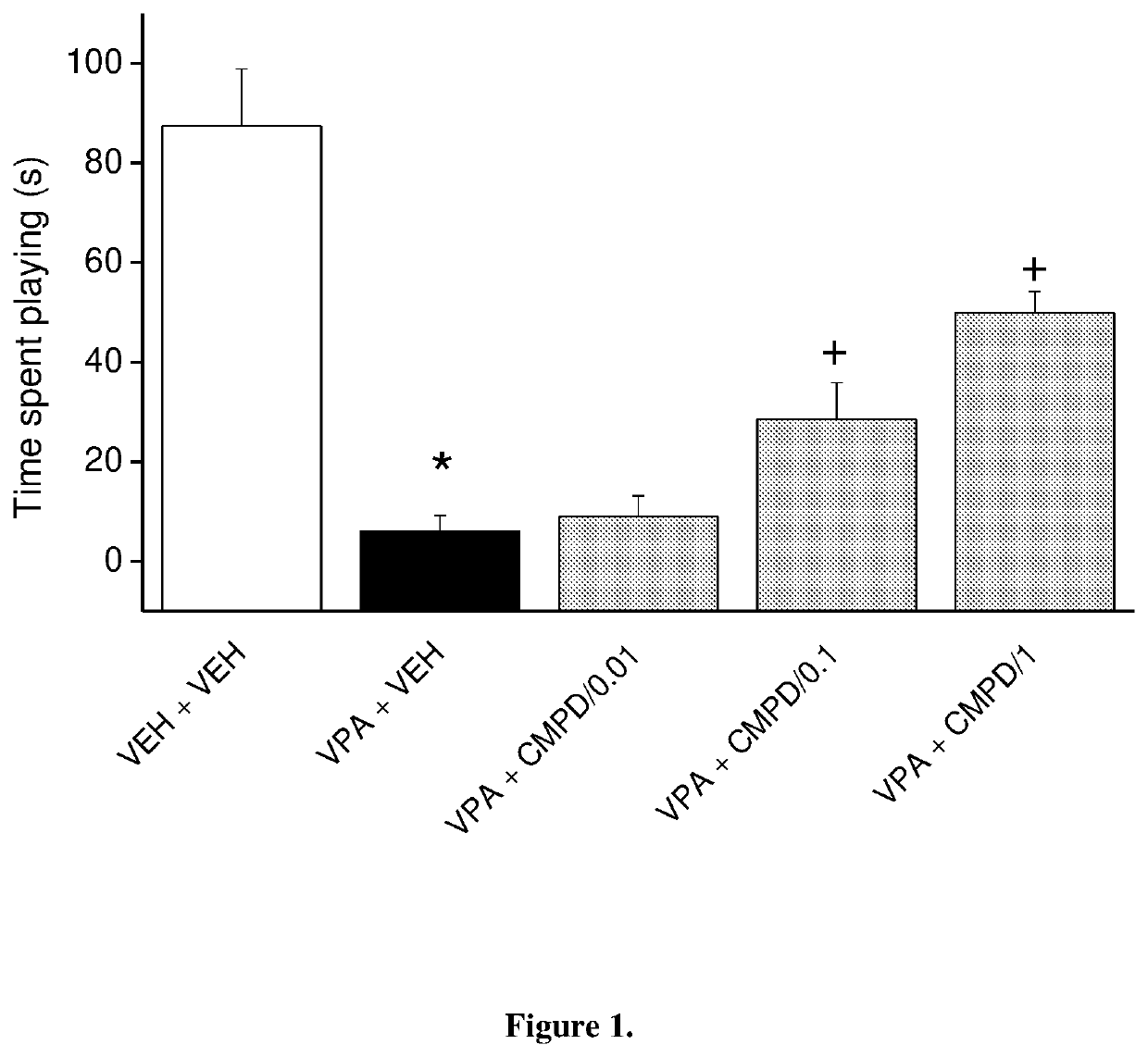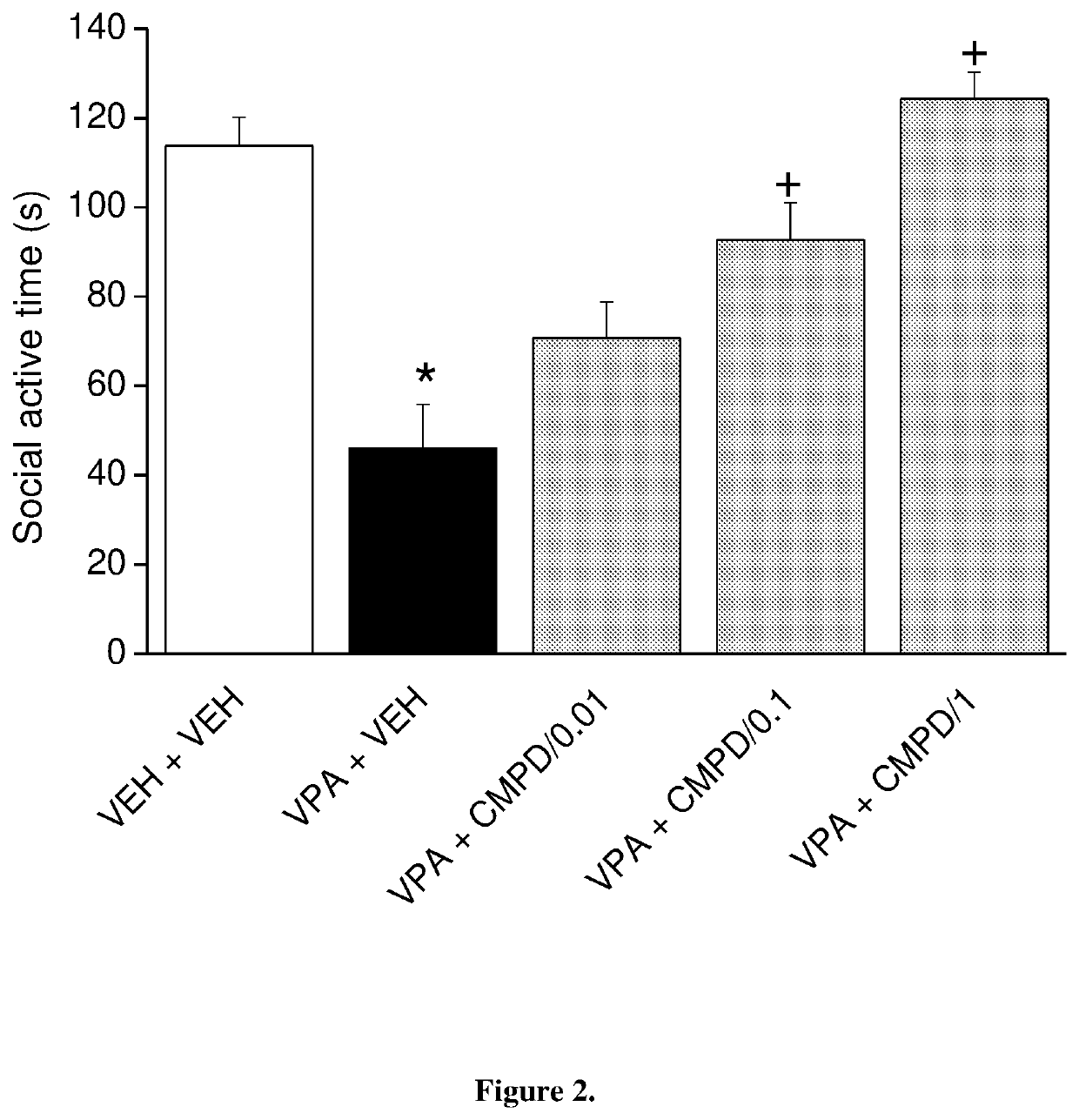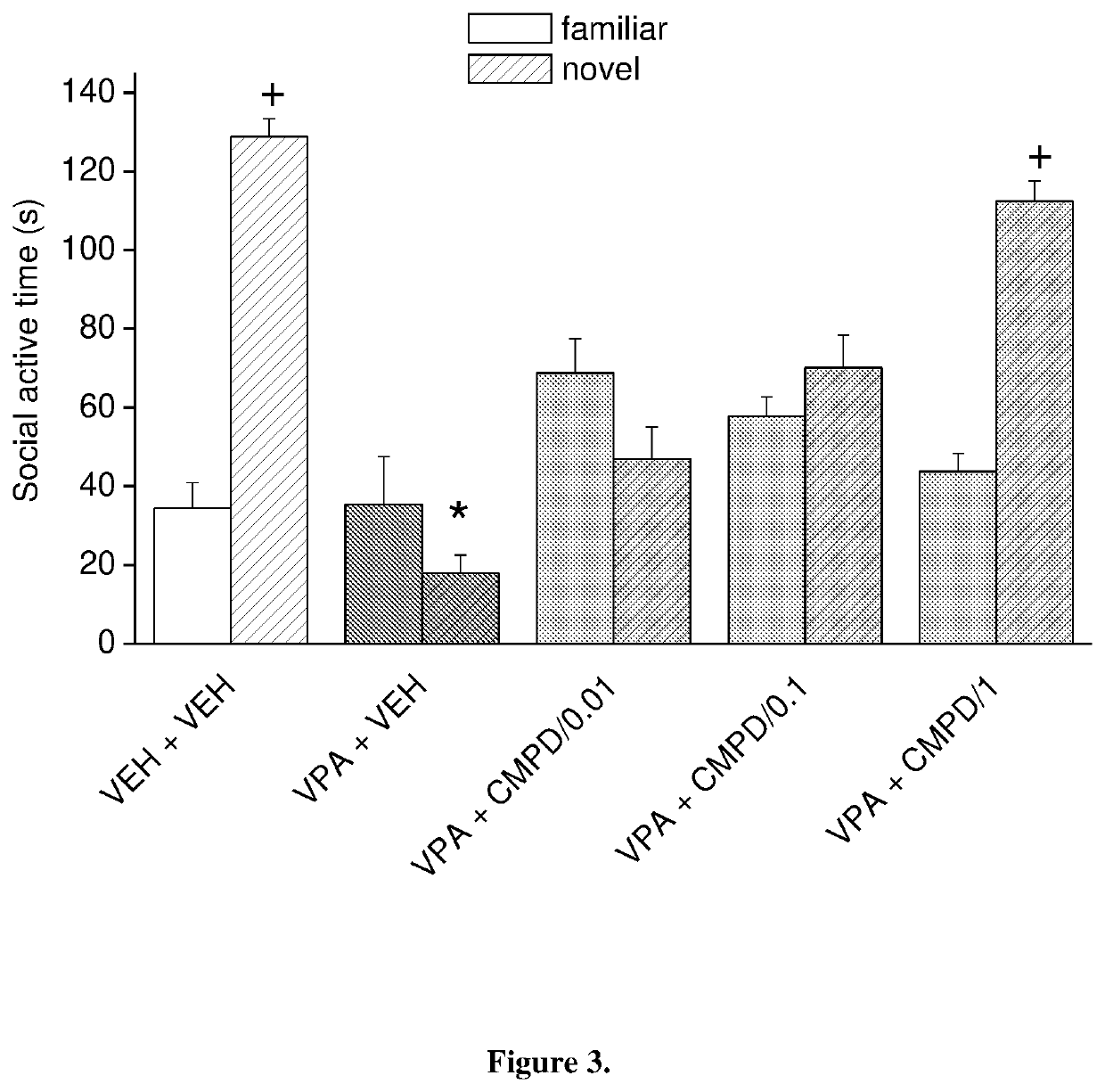Selective histamine h3 receptor antagonists for treating autism spectrum disorder
a histamine h3 receptor and autism technology, applied in the direction of nervous disorders, drug compositions, organic chemistry, etc., can solve the problems of failure to initiate and reciprocate interaction, abnormal social approach, failure of normal back-and-forth communication,
- Summary
- Abstract
- Description
- Claims
- Application Information
AI Technical Summary
Problems solved by technology
Method used
Image
Examples
example 1
[0090]1-[4-(4-{3-[(2R)-2-methylpyrrolidin-1-yl]-propoxy}-phenoxy)-piperidin-1-yl]-ethan-1-on dicitrate was tested in the social play assay in prenatally valproate-treated rats (FIG. 1). The effect of subacute (once daily for 8 days) administration of 1-[4-(4-{3-[(2R)-2-methylpyrrolidin-1-yl]-propoxy}-phenoxy)-piperidin-1-yl]-ethan-1-on dicitrate on rat social play behavior is shown in FIG. 1. The data represented are mean f SEM of 4 pairs of adolescent (at postnatal day 30) male rats for each group. 1-[4-(4-{3-[(2R)-2-methylpyrrolidin-1-yl]-propoxy}-phenoxy)-piperidin-1-yl]-ethan-1-on dicitrate given orally partially reversed social play deficits in valproate-treated offspring reaching significance at the dose 0.1 mg / kg. Thus, the compound of the invention was able to reduce the social deficit induced by prenatal valproate treatment.
example 2
[0091]1-[4-(4-{3-[(2R)-2-methylpyrrolidin-1-yl]-propoxy}-phenoxy)-piperidin-1-yl]-ethan-1-on dicitrate was tested on social preference in the 3-chamber apparatus in prenatally valproate-treated rats (FIG. 2). The effect of subacute (once daily for 8 days) oral administration of 1-[4-(4-{3-[(2R)-2-methylpyrrolidin-1-yl]-propoxy}-phenoxy)-piperidin-1-yl]-ethan-1-on dicitrate on social preference is shown in FIG. 2. The data represented are mean f SEM of 8 male rats for each group (at postnatal day 59). 1-[4-(4-{3-[(2R)-2-methylpyrrolidin-1-yl]-propoxy}-phenoxy)-piperidin-1-yl]-ethan-1-on dicitrate given orally fully reversed social preference deficits in valproate-treated offspring at the dose of 1 mg / kg. Thus, the compound of the invention was able to reduce the social deficit induced by prenatal valproate treatment.
example 3
[0092]1-[4-(4-{3-[(2R)-2-methylpyrrolidin-1-yl]-propoxy}-phenoxy)-piperidin-1-yl]-ethan-1-on dicitrate was tested on social recognition memory in the 3-chamber apparatus in prenatally valproate-treated rats (FIG. 3). The effect of subacute (once daily for 9 days) oral administration of 1-[4-(4-{3-[(2R)-2-methylpyrrolidin-1-yl]-propoxy}-phenoxy)-piperidin-1-yl]-ethan-1-on dicitrate on social recognition memory is shown in FIG. 3. The data represented are mean f SEM of 8 male rats for each group (at postnatal day 60). 1-[4-(4-{3-[(2R)-2-methylpyrrolidin-1-yl]-propoxy}-phenoxy)-piperidin-1-yl]-ethan-1-on dicitrate given orally fully reversed social recognition memory deficits in valproate-treated offspring at the dose of 1 mg / kg. Thus, the compound of the invention was able to reduce the social deficit induced by prenatal valproate treatment.
PUM
| Property | Measurement | Unit |
|---|---|---|
| Mass flow rate | aaaaa | aaaaa |
| Composition | aaaaa | aaaaa |
| Disorder | aaaaa | aaaaa |
Abstract
Description
Claims
Application Information
 Login to view more
Login to view more - R&D Engineer
- R&D Manager
- IP Professional
- Industry Leading Data Capabilities
- Powerful AI technology
- Patent DNA Extraction
Browse by: Latest US Patents, China's latest patents, Technical Efficacy Thesaurus, Application Domain, Technology Topic.
© 2024 PatSnap. All rights reserved.Legal|Privacy policy|Modern Slavery Act Transparency Statement|Sitemap



